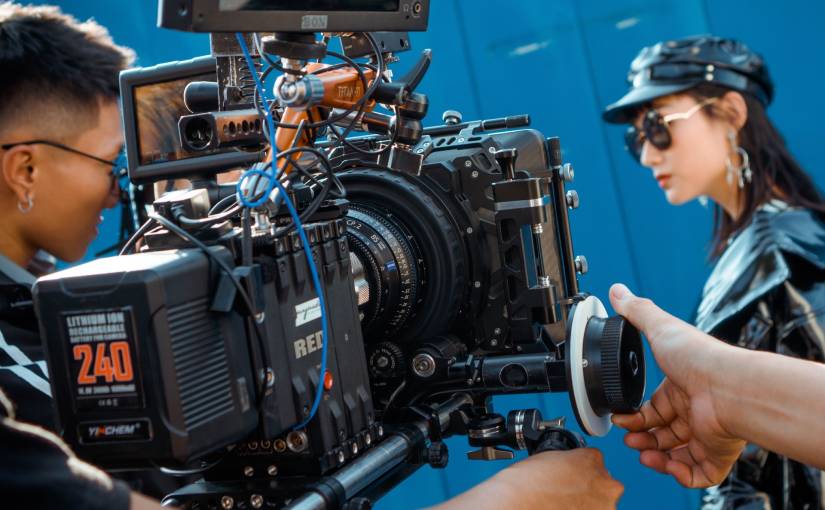For years, the sets of corporate marketing video shoots were bland, boring, and outright uninspired. However, the increasingly crowded digital marketplace has made it harder than ever before for these businesses to grab consumers’ attention and effectively deliver their video content.
In response, some of the world’s largest enterprises are taking pages right out of the Hollywood film-making playbook. Instead, they use strategies typically reserved for big-budget movies to create compelling and exciting marketing messages.
A few of these straight-out-of-Hollywood tactics include aerial shots, 360 VR, 4K+ ultra-high-definition footage, and drones. Framework Films is one of the Los Angeles-based production firms that top companies like Microsoft are tapping to produce their content. Framework’s founder, Mike Lindle, shared insights with us on how evolving video tech will shape marketing in 2022.
How Have Tech Marketing Videos Evolved?
As with most types of marketing innovation, big tech companies are leading the charge of deploying Hollywood-like content creation strategies. “Tech giants are adapting to a changing business ecosystem,” says Lindle. “The caliber of corporate video content has significantly improved; this is just the beginning.”
They apply these tactics when creating front-facing marketing videos and internal corporate video content for their staff members. Some of the most significant changes Lindle pointed out that have taken place over the last few years include the following.
1. Replacing Press Releases with Cinematic Videos
Traditionally, businesses notified the general public of significant developments such as expanded service offerings or new product releases via a press conference.
However, cinematic productions are slowly replacing this approach. Instead, companies distribute these across all relevant media outlets and the company’s social media accounts.
2. An Increased Need for Captivating Content
Our “always connected” society has made it increasingly challenging for corporations to connect with their audiences.
Unimpressive marketing content dies a quick death. Disinterested viewers scroll quickly past or swipe right until they find something that genuinely catches their eye. Tech companies are combating this development by combining high-quality visual effects, slow-motion footage, time-lapse video, and other top-end cinematography techniques.
3. Drone-Based Cinematography
Drone-based cinematography is quickly becoming a staple of the modern marketing campaign. In addition, these types of videos are excellent for filming virtual tours or conducting fly-throughs.
4. The Use of Publicity Stunts
Finally, corporations operating in various industries have begun to leverage curated publicity stunts to generate buzz about upcoming service or product releases.
While these stunts use several different advertising mediums, ultra-high-definition video footage is at the center of it all. Businesses utilizing this approach release teaser videos strategically in the weeks or months leading up to a significant product launch.
What Is Fueling These Changes?
Like most new marketing trends, this massive shift towards producing cinema-quality video content is fueled by changing consumer expectations.
Specifically, consumers expect the companies they support to keep them engaged and well informed via expertly crafted marketing campaigns.
This viewpoint is especially common in the tech industry. As a result, the capabilities of these products must often be explained in a digestible and entertaining manner.
In addition, millions of people have transitioned to remote work.
“The workplace has changed significantly since 2019, especially in big tech,” Lindle noted. “We’ve seen a bigger push to normalize a hybrid, flexible work environment. In addition, new remote work policies have allowed that cultural shift to solidify.”
As a result, there has been a significant push to normalize remote or hybrid working environments and structure marketing media to appeal to this audience.
Ultimately, this change has altered how people consume marketing content. In order to adapt to these new consumer habits, businesses are seeking to elevate the quality of their marketing videos. High-quality marketing content will also be invaluable for relaying internal information to staff members who work remotely.
What Technologies Are Being Adopted for Video Marketing?
There is a multitude of leading-edge film technologies that have been repurposed for creating video marketing content. A few of Lindle’s examples include:
- heavy-lift drones;
- robotic motion control stabilized cinematography;
- immersive 360 VR;
- advanced VFX apps;
- ultra HD recording and broadcasting;
- high frame rate/slow-motion cinematography;
- low light shooting; and
- streaming service-approved lighting rigs and cameras.
Cumulatively, these tools have allowed corporations to elevate their marketing content’s quality significantly.
How These Trends Will Impact the Future of Advertising
Many major enterprises and big tech companies are leveraging Hollywood film-making strategies to enhance their video marketing content.
Some of these organizations have elected to form their own in-house production divisions, while others purchase existing production houses.
Like Microsoft, other big tech companies are taking a different approach altogether and are contracting with established media production agencies to develop innovative new advertising strategies.
While there are many different ways that big tech companies can navigate these changing times, these companies must be proactive if they hope to stay relevant and competitive within this ever-evolving industry. Most importantly, as consumers’ consumption habits change, content needs to change with it.
“I think it’s simple. People now expect a more genuine connection with how they consume content,” says Lindle. “Tailored regional content that is relevant to their consumer habits and lifestyle goals, more frequent shorter-form updates and campaigns, and higher quality marketing materials for retaining viewership.”
Image Credit: Pexels; Thank you

















